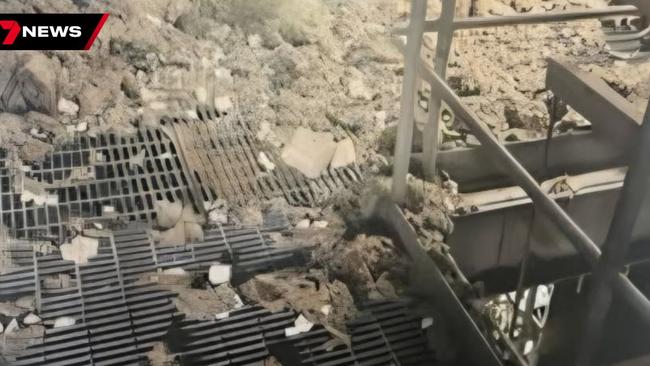Coal-fired Callide power station ‘too dangerous, old’ for Queensland’s future
The embattled Callide coal-fired power station is too dangerous and unreliable to underpin the state’s future energy needs, according to new modelling.

The embattled Callide coal-fired power station in central Queensland is too dangerous and unreliable to underpin the state’s future energy needs, new modelling says.
Treasurer David Janetzki last week revealed state-owned coal-fired plants would stay open for longer under the Liberal National Party government’s plan to tear up the state’s renewable energy targets but still reach net zero emissions by 2050.
Mr Janetzki’s major policy announcement was dealt a blow after The Australian revealed the state-owned Callide C3 generator had a boiler explode on April 4, forcing the unit offline until at least May 30.
After fending off allegations from his political opponents he had covered up the blast, Mr Janetzki on Sunday sacked the Callide general manager and brought forward the exit of government-owned corporation CS Energy’s chief executive Darren Busine.
The Energy Minister accused CS Energy of seriously downplaying the incident – in what he described as a “clear example of deception via omission” – which led Mr Janetzki to provide “grossly inaccurate” information to Premier David Crisafulli.
Modelling from energy specialist Nexa Advisory – which is progressively analysing all of the nation’s coal-fired power stations – shows even before this latest explosion the two Callide generators – B and C – have been unreliable for years.
Nexa Advisory chief executive Stephanie Bashir said the most recent event was the third major incident at the power station in four years and confirmed “what we already know, that ageing coal-fired assets cannot be relied on even as Band-Aid solutions”.
“This incident shows that even after the extensive work and maintenance since 2021, Callide C is beyond repair,” she said.

In May 2021, there was a catastrophic explosion at the Callide C4 plant, causing widespread blackouts and forcing the unit offline for nearly two years because of the blast. It did not start operating again until August last year.
In February, Callide Power Trading Pty Ltd was ordered to pay a penalty of $9m for breaching national rules.
The Nexa Advisory modelling shows that the 700MW Callide B station, commissioned in 1988, has had an average total downtime across its two units of about 4000 hours a year, “equivalent to each unit being offline for 12 weeks a year”.
And for Callide C – even before the 2021 explosion and the April blast – between 2012 and 2020 it was offline for an average of 2000 hours each year.
Ms Bashir said the LNP should redirect its $1.4bn power station maintenance guarantee funding to renewable projects. “There’s really no time for blame; what we should be doing is accepting and backing replacement generation, renewable generation,” she said.
She said the Callide B station should be closed on time in 2028 – not kept open by the government – and a closure date should be set for Callide C, which was commissioned in 2001 and has a capacity of 844MW.
Asked on Sunday whether the recent blast at Callide undermined his confidence in the government’s policy to keep coal-fired power stations open for longer, Mr Crisafulli said he believed the plants had a long-term future. “We do have the youngest fleet of coal-fired power stations in the nation, and if we get the maintenance right, we can keep them on and underpin our energy needs while we transition to a renewable future. That can be done,” he said.
“I don’t think it’s acceptable to say that because for 10 years they’ve been starved of maintenance and they haven’t performed the way they should, that doesn’t mean there’s not a future.
“There is, and we should be unashamed about that.”





To join the conversation, please log in. Don't have an account? Register
Join the conversation, you are commenting as Logout